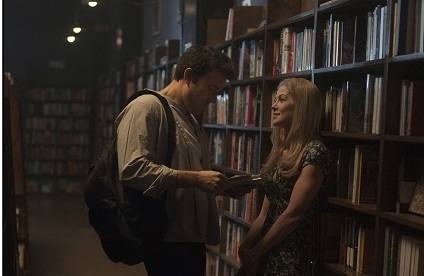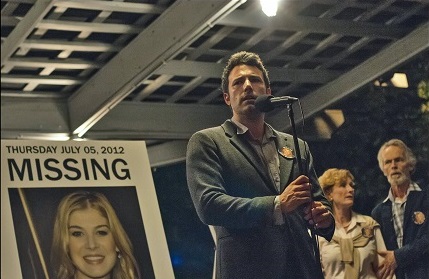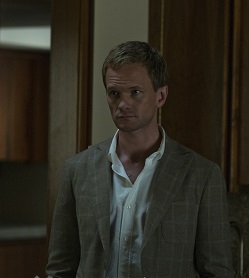
The most simple and often-used description of Gillian Flynn’s 2012 bestseller Gone Girl is that it is the story of a marriage. That description usually is followed by the qualifying phrase “but it’s about much more.”
And that’s true.
Gone Girl is indeed the story of a marriage, and much more—a toxic relationship that grows poisonous by the day; two self-absorbed people who should never have married; those same two people who in their marriage create a third person and hide secrets on top of secrets. It is about the nastiest kind of revenge heaped on one’s spouse, the person you once loved more than anything. And the story is told by two of the most unreliable narrators, each of whom thinks he or she is being honest and is the hero or heroine of this story.
And Gone Girl also is about tabloid journalism with its lack of ethics.
Readers either loved Gone Girl—I know I did—or hated it. Few people who read Gillian Flynn's novel were ambivalent about it. And certainly enough people read it to keep it on the hardcover bestseller lists for months. Currently, it is No. 1 on the New York Times trade paperback fiction list.
With all the hype of the novel—and the endless parade of its stars on every conceivable talk show—can the movie version of Gone Girl live up to its reputation?
The good news is: Yes, it does.
And the better news is that the film version of Gone Girl is the exact movie the novel’s readers have wanted and need.
It helps that the author also wrote the screenplay. Some of the novel’s scenes are condensed and some characters are deleted completely. But this works to the film’s advantage. While Gone Girl is still long at two hours and 25 minutes, the deliberate pacing moves quickly. The spirit of the novel is definitely on the screen.
Flynn’s dark script is enhanced by the pitch-perfect direction of David Fincher (The Girl With the Dragon Tattoo, The Social Network) and the inspired casting of Ben Affleck and Rosamund Pike as Nick and Amy Dunne. Affleck and Pike skillfully show what emotional con artists Nick and Amy are. You both root for Affleck and Pike and also want to shake them while hoping that you never become friends with either Nick or Amy.
The cinematography by Jeff Cronenweth captures the area’s ambience. OK, full disclosure here: Gone Girl was shot in Cape Girardeau, Missouri, which is 30 miles from my hometown. I have spent a lot of time in Cape, as we Southeastern Missourians say, and Gone Girl captures the beauty and nuances of this lovely town.
In Gone Girl, Nick and Amy have moved from their New York City brownstone to North Carthage, Missouri, ostensibly to take care of his mother who was diagnosed with cancer. But 
really, that was more of an excuse for this once golden couple. Nick and Amy had lost their jobs and didn’t really have any other prospects. So in North Carthage, they have settled. Nick is co-owner of a bar called The Bar with his twin sister, Margo (Carrie Coon) and teaches at the local college.
And Amy, well, what does Amy do all day? She doesn’t work, she hasn’t made any friends and she isn’t thrilled with this small Missouri city. Amy is used to being in control, the center of attention, everyone’s ideal. Here, she is none of that, and certainly not Nick’s focus. As a child, Amy was the prototype for a series of children’s books called “Amazing Amy,” written by her parents. It’s been a long time since she was “amazing” anything.
Nick comes home one day to find what looks like a struggle in the living room. Amy is missing. An investigation launched to find Amy gains national attention and soon the laid-back Nick becomes the main suspect in her disappearance. Nick, after all, doesn’t seem to be the upset husband. He’s a bit too smug, too glib, smiles too frequently, and has a temper. And there is that diary that Amy kept.
Those who have read the novel know what happens next. Those who haven’t read the novel should feel free to read the rest of this review without fear of spoilers.
The supporting cast is, with one exception, also well cast. Kim Dickens, so good in David Simon’s Treme on HBO, nails the role of detective Rhonda Boney, who has doubts about everything in this case. Dickens is joined by the reliable Patrick Fugit as her partner, detective Jim Gilpin.
Missi Pyle revels in her role as a Nancy Grace-like TV personality. Casey Wilson has a nice turn as a neighbor of the Dunnes as does Kathleen Rose Perkins (Episodes) in her one scene as a fame groupie.
Tyler Perry is a revelation as ultra-slick attorney Tanner Bolt, who could get Satan off with a few weeks of community service. Perry should take off Madea’s costume more often. If you need a criminal lawyer, Perry’s Tanner Bolt would be your best bet.
The only miscasting is Neil Patrick Harris as Desi Collings, Amy’s former boyfriend. I am a huge fan of Harris and would watch him recite the phone book. And I think he can do any role—from comedy, drama, Broadway, Tony Awards host, and beyond. But here, he just doesn’t bring his A-game. Desi needs to be creepy, yet vulnerable. And Harris can certainly handle a role like that as he proved in a 2004 Law & Order: Criminal Intent episode titled “Want.”
Gone Girl makes a successful transition to film. But as always, I recommend the novel. I also think that Flynn’s other novels, Dark Places and Sharp Objects, are even better than Gone Girl.
Rated R (Under 17 requires accompanying parent or adult guardian). Extreme violence (though I disagree with this as there is only one gruesome scene.) Running time: 2 hours 25 minutes.
Photos: Top, Rosamund Pike and Ben Affleck; second photo: Ben Afflect with Lsia Barnes and David Clennon as Amy's parents; third photo, Affleck with Tyler Perry; last photo, Neil Patrick Harris. Photos courtesy Twentieth Century Fox


